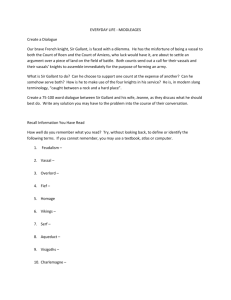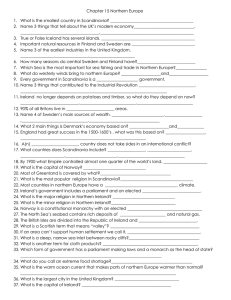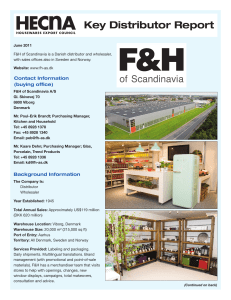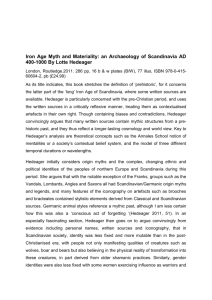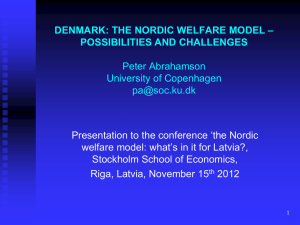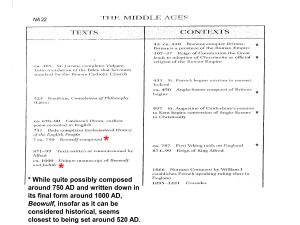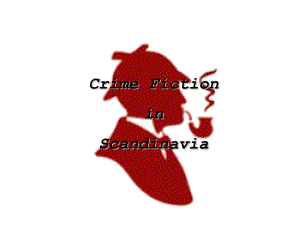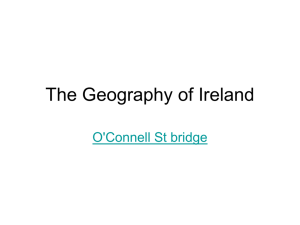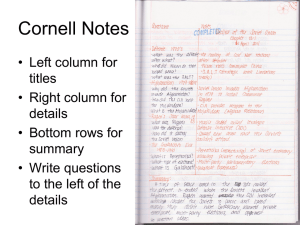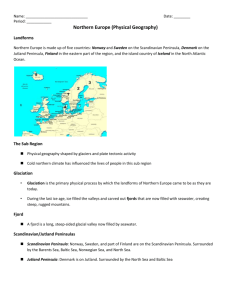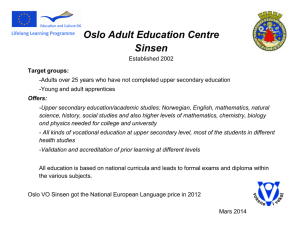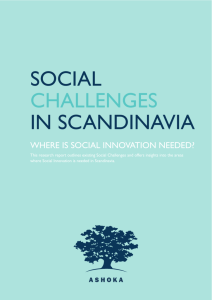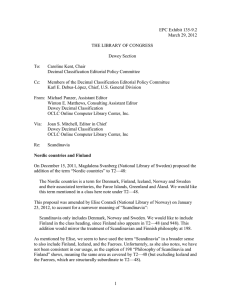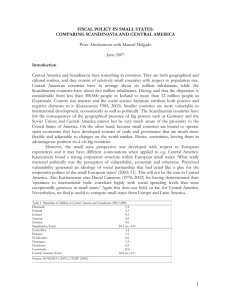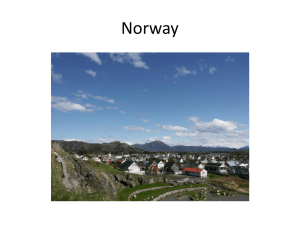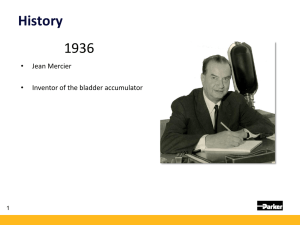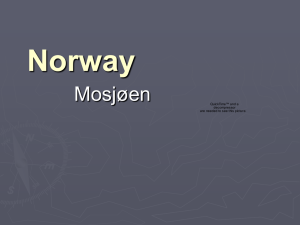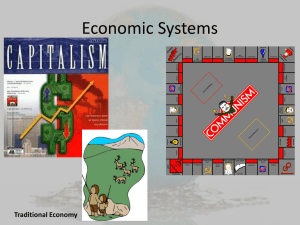Scandinavia
advertisement
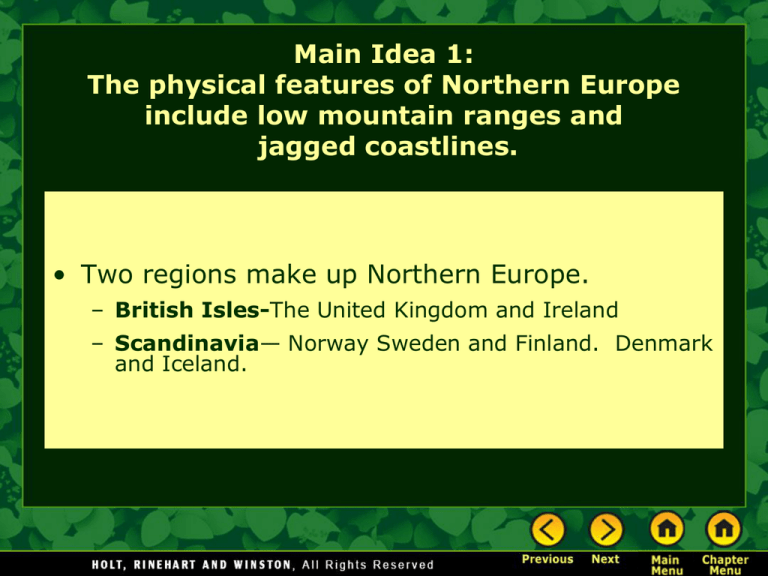
Main Idea 1: The physical features of Northern Europe include low mountain ranges and jagged coastlines. • Two regions make up Northern Europe. – British Isles-The United Kingdom and Ireland – Scandinavia— Norway Sweden and Finland. Denmark and Iceland. Physical Features Hills and Mountains • Rocky soil and uneven terrain make farming difficult. • Fewer people live there. Farmland and Plains • Southern parts of British Isles and Scandinavia. • Ireland’s hills provide rich farmland. Effects of Glaciers • Jagged coastlines cut by glaciers • Fjords, narrow inlets of the sea set between high, rocky cliffs, formed as glaciers melted. Main Idea 2: Northern Europe’s natural resources include energy sources, soils, and seas. Energy • Oil and natural gas in the North Sea • Hydroelectric energy • Geothermal energy, or energy from the heat of Earth’s interior • timber-producing forests in the Scandinavian peninsula. Forests • and Soils • Seas and Oceans rich farmland. sheep and dairy cattle are common. • Fishing is key industry in Norway, Denmark, and Iceland. Main Idea 3: The climates of Northern Europe range from a mild coastal climate to a freezing ice cap climate. • North Atlantic Drift, an ocean current that brings warm, moist air across the Atlantic Ocean. • Much of Northern Europe has wet and mild climate. – Denmark, the British Isles • Far north are colder climates. – Northern Scandinavia has a subarctic climate. – tundra and ice cap climates. Main Idea 1: British Isles Today. • Two independent countries make up the British Isles. – Republic of Ireland – United Kingdom, which is a union of four small countries • England • Scotland • Wales • Northern Ireland Main Idea 2: British culture, such as government and music, has influenced much of the world. • United Kingdom – Constitutional monarchy—a democracy in which a king or queen serves as a leader but a legislature makes laws - Prime minister leads British government. - Britain’s Parliament Makes its laws. • Republic of Ireland – President as head of state – Prime minister, appointed by the president, runs the government with the Irish parliament. Main Idea 2: Scandinavia today is known for its peaceful and prosperous countries. • Today, the countries of Scandinavia have much in common – Similar political views, languages, and religion – strong economies, and well-educated workers – Sweden, Denmark, Finland, and Norway, are peaceful, stable, and prosperous nations. Scandinavia Today Sweden Denmark • Largest and most populous Scandinavian country • Smallest Scandinavian country and most densely populated • More than 80 percent live in urban areas • About 50 percent of land is used for farming. • Stockholm, capital and largest city, is built on 14 islands and part of the mainland. • Farm goods are important exports. • Sweden has been a neutral country for more than 200 years, meaning that it has chosen not to take sides in international conflicts. • Modern industries, such as iron and electronics, are important as well. Scandinavia Today, continued Norway • One of the longest coastlines in the world • Fjords shelter Norway’s many harbors. • Oslo, capital city, is the country’s leading seaport and industrial center. • Highest per capita GDP in Scandinavia • North Sea provides valuable oil and natural gas resources. • Refused to join the European Union Finland • Easternmost Scandinavian country, between Sweden and Russia • Helsinki is the capital and the largest city. • Trade is important. • Paper and forest products are important exports. • Shipbuilding and electronics are important industries. Click on the window to start video
